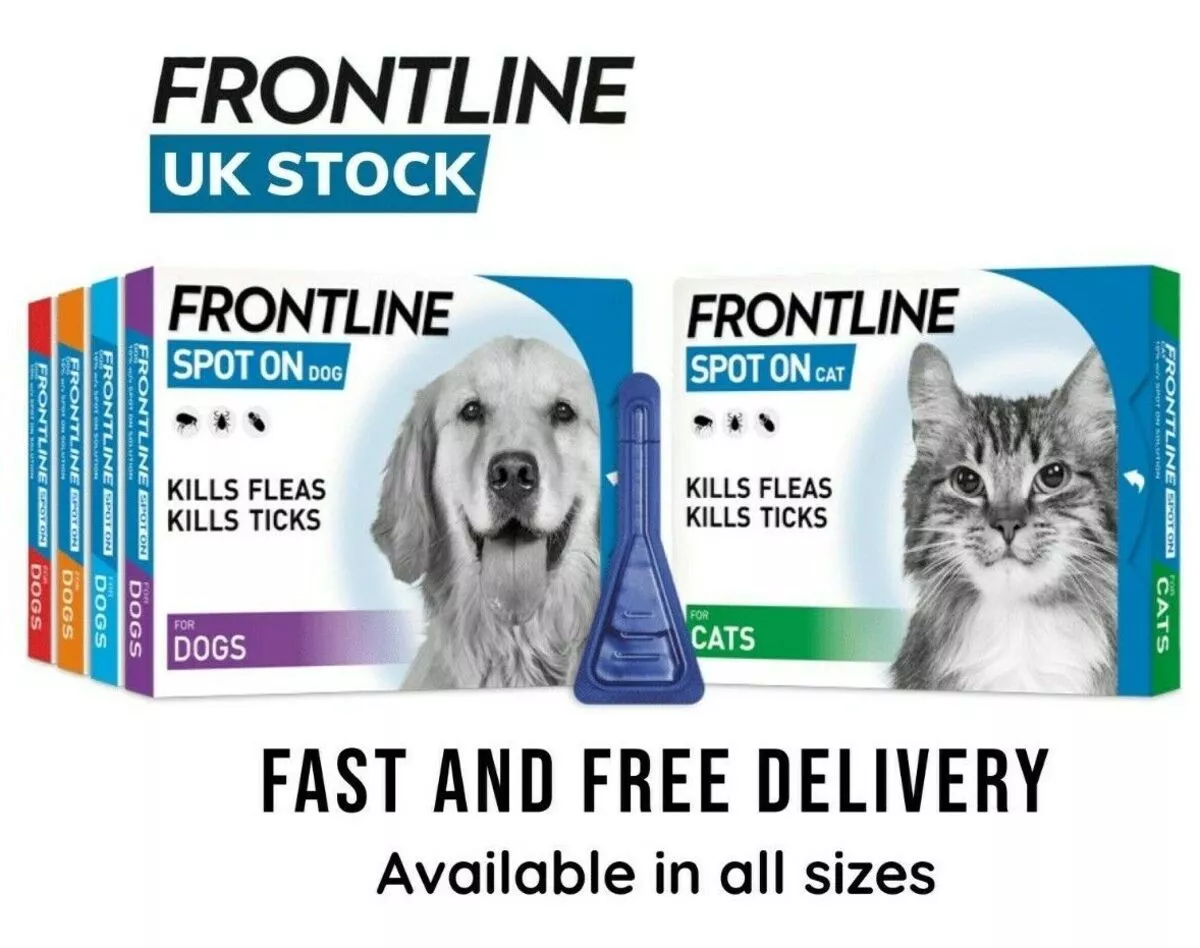Various forms of cat flea treatment exist, ranging from oral tablets to drinkable liquids, lotions, and even skin rub-ons. However, the pertinent question often arises about the adaptation of these cat flea treatments for dogs, especially when one has accidentally put cat frontline on a dog.
The Capstar Flea Solution by Novartis
Capstar, a remarkable flea and tick treatment by Novartis, is designed to suit pets of varying size. It’s an orally administered product that’s used once daily and boasts of eliminating fleas from both dogs and cats within a maximum span of six hours. The key active ingredient, Nitenpyram, has demonstrated safety for cats and dogs. The medication’s packaging color varies according to the size of the intended pet.
Cost-effective Nitenpyram Flea Exterminator Capsules
These capsules share the same active ingredient as their brand-name counterparts, presenting a cost-effective alternative. Similarly, the efficacy remains consistent. To select the right dosage, you must be aware of your pet weight.
The Likely Ineffectiveness of Advantage Cat Flea Treatment on Dogs

Also discover: Bravecto without vet prescription
The Advantage product line is more species and size exact, which means that it might not be effective when one has accidentally put cat frontline on a dog. The product is harmless and exhibits a bitter flavor that discourages ingestion. Although it’s likely safe for dog usage, it might lack effectiveness.
A plethora of dual-purpose supplements are available designed to fight fleas naturally in both cats and dogs. Notably, yeast and garlic have been identified as potent flea and tick repellers. You can opt for one bottle as it equally benefits both pets. Some available brand offerings include NaturVet and PetGuard alongside generic store brands.
Limited Potency of Cat Products When Used on Dogs
Often, cats are much smaller in comparison to dogs, leading to concerns about the efficacy of feline products when one has accidentally put cat frontline on a dog. A product purposed for an animal weighing less than nine pounds might be insufficient for a pet exceeding twenty pounds.
While most cat flea and tick treatments can cater to both dogs and cats, you should consult your veterinarian for safety reasons. It’s especially important when you have accidentally put cat frontline on a dog.
Reasons to Avoid Using Cat Flea and Tick Products on Dogs
The Size Discrepancy Between Pets
There’s a notable size difference between cats and the majority of dogs, which significantly impacts the effectiveness of flea and tick products. Protecting a dog usually requires a higher dosage than what suffices for a cat. Most of these products are also dosed based on weight, not just the type of pet, making it essential to select an appropriate product tailored to your pet’s weight. Furthermore, ensure you have your cat weighed annually to maintain appropriate flea and tick control, especially if you’ve ever accidentally put cat frontline on a dog.
Diverse Medication Potency
Medications employed in cat flea and tick control differ substantially in strength from those designed for dogs. While there are flea and tick brands available for both cats and dogs, the versions are not interchangeable. For instance, you should not use Frontline Gold for cats on dogs, and vice versa.
Distinct Medication Ingredients
The compounds in cat flea and tick control products often differ significantly from those in dog-targeted solutions. Although these ingredients are generally safe and effective for cats, they may not provide adequate protection if you’ve accidentally put cat frontline on a dog. Certain elements like pyrethrins and permethrins, which may be safe for dogs, can pose toxic risks to cats.
Dog Habits and Lifestyle
Many dogs spend a significant amount of time outdoors compared to cats and may venture to areas that have more fleas and ticks than a cat’s indoor environment. Dogs who often swim or play in water would benefit from a waterproof topical flea and tick product.
Cat flea and tick solutions usually hold less volume, different strengths, and unique sorts of medication, rendering them unfit for guarding dogs against such pests. All these variables, coupled with a dog’s higher potential for exposure, highlight why applying cat products to dogs, apart from when you’ve accidentally put cat frontline on a dog, may not be a feasible solution for protecting dogs from fleas and ticks.
The Implications of Accidentally Putting Cat Frontline on a Dog
In the labyrinth of pet care, one common mistake many pet parents make is accidentally putting cat frontline on a dog. This mix-up may seem insignificant, but its implications could be quite considerable, and pet parents should be aware of what might happen when such a mistake occurs.
When you accidentally put cat frontline on a dog, the immediate concern revolves around safety and effectiveness. Are cat flea treatments safe for use on dogs? Will they be effective? The answers to these questions are both essential and complex.
The Question of Safety
Frontline for cats and Frontline for dogs are two different products developed specifically for their respective animals. Each contains specific dosages and ingredients that cater to the unique physiology of cats and dogs. These distinctions should be taken into account, especially when you accidentally put cat frontline on a dog.
Most active ingredients in Frontline for cats are generally safe for dogs, but the reverse is not always true. Some canine flea medications contain ingredients that can be quite toxic to cats. Therefore, the mistake might not pose apparent immediate harm to your dog, but it’s a habit that should be prevented and corrected. Always use the appropriate Frontline product for your dog to ensure their well-being and prevent any adverse reactions.
The Question of Efficacy
Aside from safety concerns, efficacy is another significant consideration in the event that you accidentally put cat frontline on a dog. Frontline products are formulated explicitly with consideration of an animal’s size and body weight. Therefore, the amount of medication present in cat Frontline may not be sufficient to provide a full scope of protection to larger dogs. Consequently, your dog may be left inadequately guarded against flea and tick infestations.
Conclusion about Accidentally put cat frontline on dog
The key takeaway is simple: always use the correct and specifically designed Frontline product for your dog or cat. In cases when you accidentally put cat frontline on a dog, it’s crucial to monitor your dog for any signs of discomfort, and consult your veterinarian for advice. Remember, our pets rely on us for their health and well-being, so always ensure you’re making the most appropriate choices for them, especially regarding parasite prevention and treatment.
Read also: Confining a cat to a room at night












